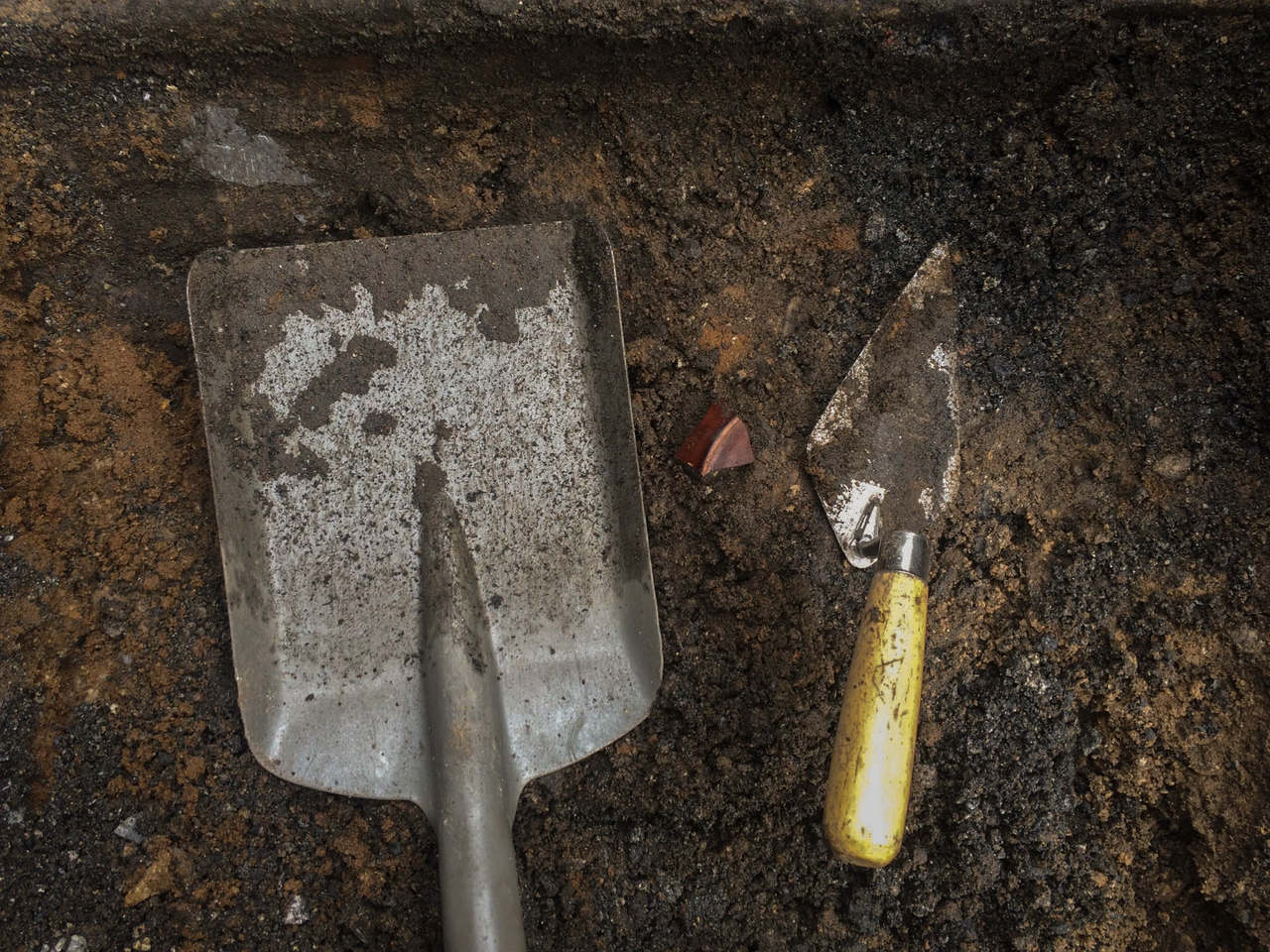In 2021, Falkirk Community Trust collaborated with Archaeology Scotland to hold the Big Dig Archaeology Festival in Milton Row, Denny, Falkirk. Our volunteers made a few exciting finds during the excavations…
Community archaeology provides a wonderful opportunity for people to get involved in researching the history of their local area, and I was lucky enough to have had the chance to join the Big Dig Archaeology Festival in September 2021 which was run by Falkirk Community Trust, as part of the Great Place project.
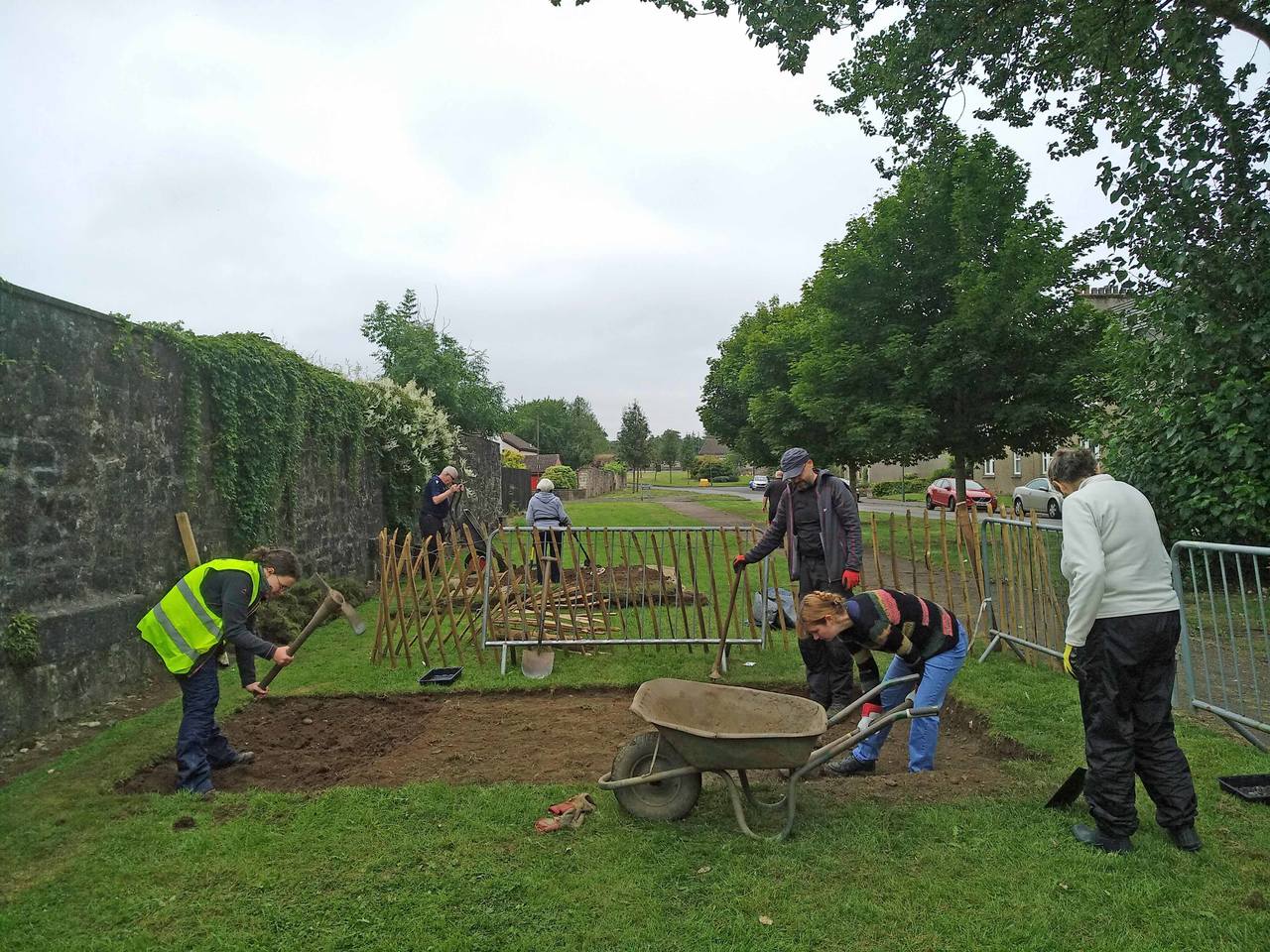

Supported by Archaeology Scotland, the dig took place over ten days and taught local volunteers like me the basics of field excavation, from topsoiling, mattocking, trowelling, and surveying techniques, to cataloguing finds and interpreting evidence. The site we excavated was Milton Row in Denny, a wall surrounding Carronvale House, adjacent to a former printfield for calico printing in the 1800s. Calico printing was a skilled job which paid high wages to the craftsmen who block-printed by hand using carved sycamore blocks or copper-faced blocks of wood covered with the required pigment colour. By 1832, the wages for these skilled workers had risen so high that printfield owners took steps to reduce them, and the resulting general strike, called by the Printers’ Union in Scotland and England, had a big impact on production. To keep their printfields running, the owners imported large numbers of unemployed weavers from the increasingly obsolete hand-weaving industry to take the skilled workers’ places.
In Denny, these strike breakers, also called “nobs,” were housed in purpose-built “but and ben” houses. These were little more than mono-pitched roofed sheds whose back walls were formed by the north boundary wall around Carronvale House. Stretching 270m along the boundary wall, the fireplaces and flues for these houses were carved out of the old estate wall. Milton Row, or “Nob Row” as it was nicknamed, stood until the 1930s, when the local council finally began to slowly demolish the condemned houses. The plan for the Big Dig at Milton Row was to excavate part of the grass verge running along the wall, to study the foundations of any houses uncovered, and analyse the finds.


The topsoiling of the section we were excavating went smoothly (see first photo above), but during the mattocking phase we discovered a layer of ash that had been deposited on the site during the 1930s by the Vale Paper Mill who owned it at the time. The lorry loads of ash had been dumped on the remains of Nob Row to bring the ground level up to that on the other side of the wall, and it all had to be shovelled out in order to reach the original house foundations, which took a lot of digging!
It proved to be well worth the effort (see photo above), as over the course of the next week the foundations of a house were uncovered, giving us a much better idea of the layout of the rooms and how much space the occupants might have had – which turned out to be very little.
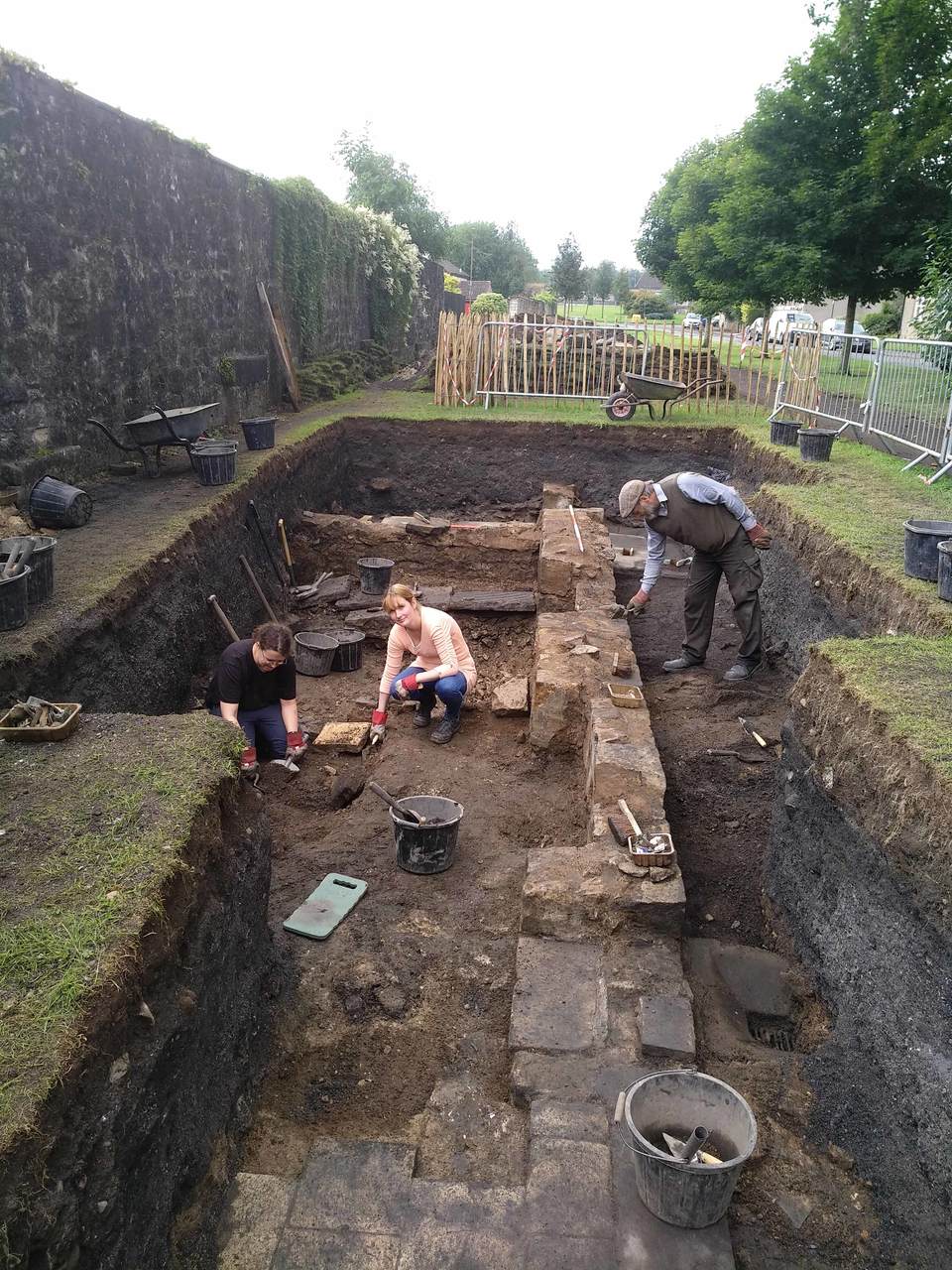

We also discovered many finds as we progressed down the layers of soil, which included broken china, glass, animal bones and nails, and some particularly interesting objects including marbles, coins, and a large piece of a pudding boiler. As most of the finds were in broken pieces, I was surprised when, during the excavation, an intact glass bottle was discovered which was in excellent condition. It was in the form of a brown jar with an external screw top, with the word “Virol” embossed on the side in cursive writing.
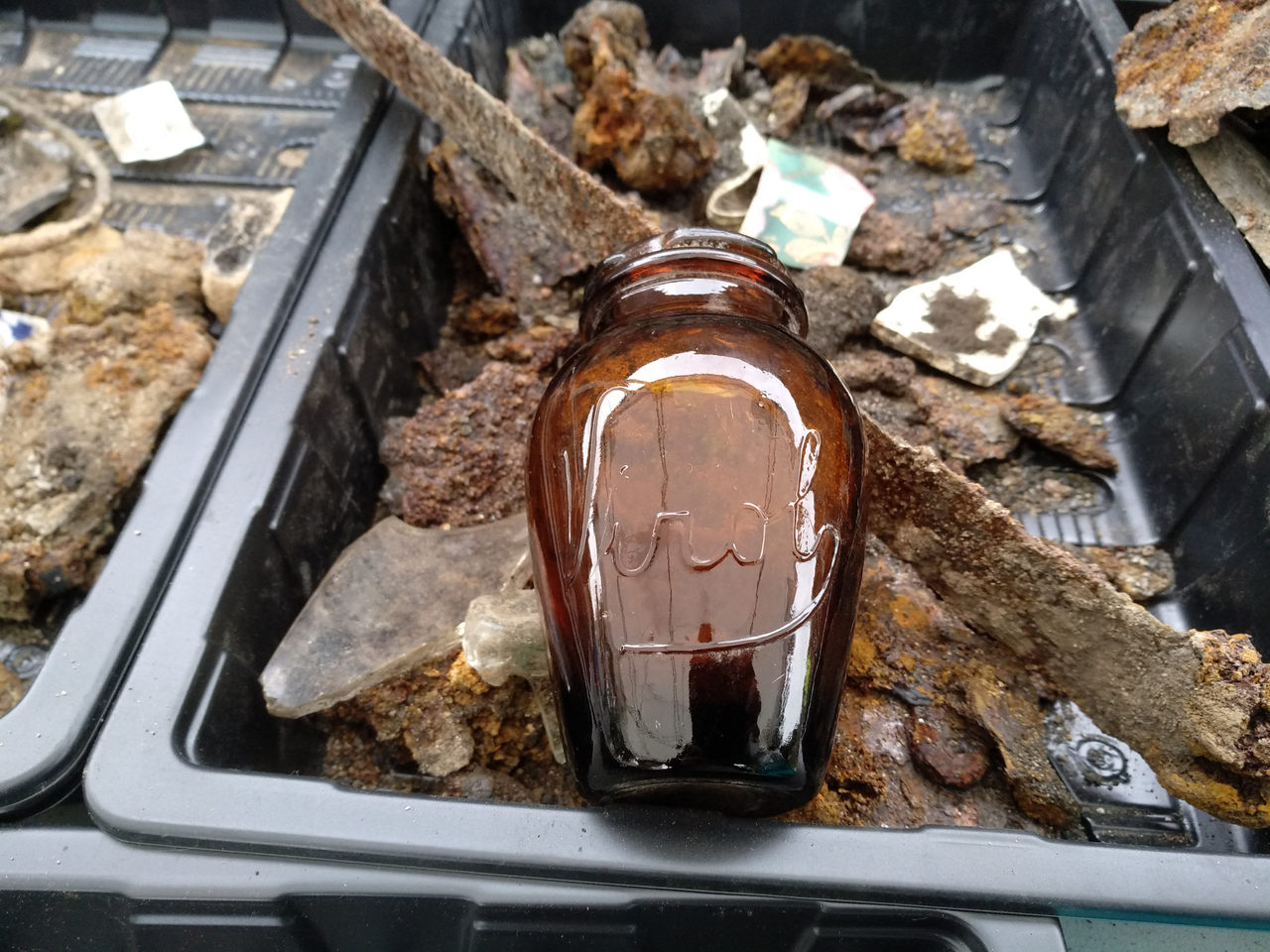

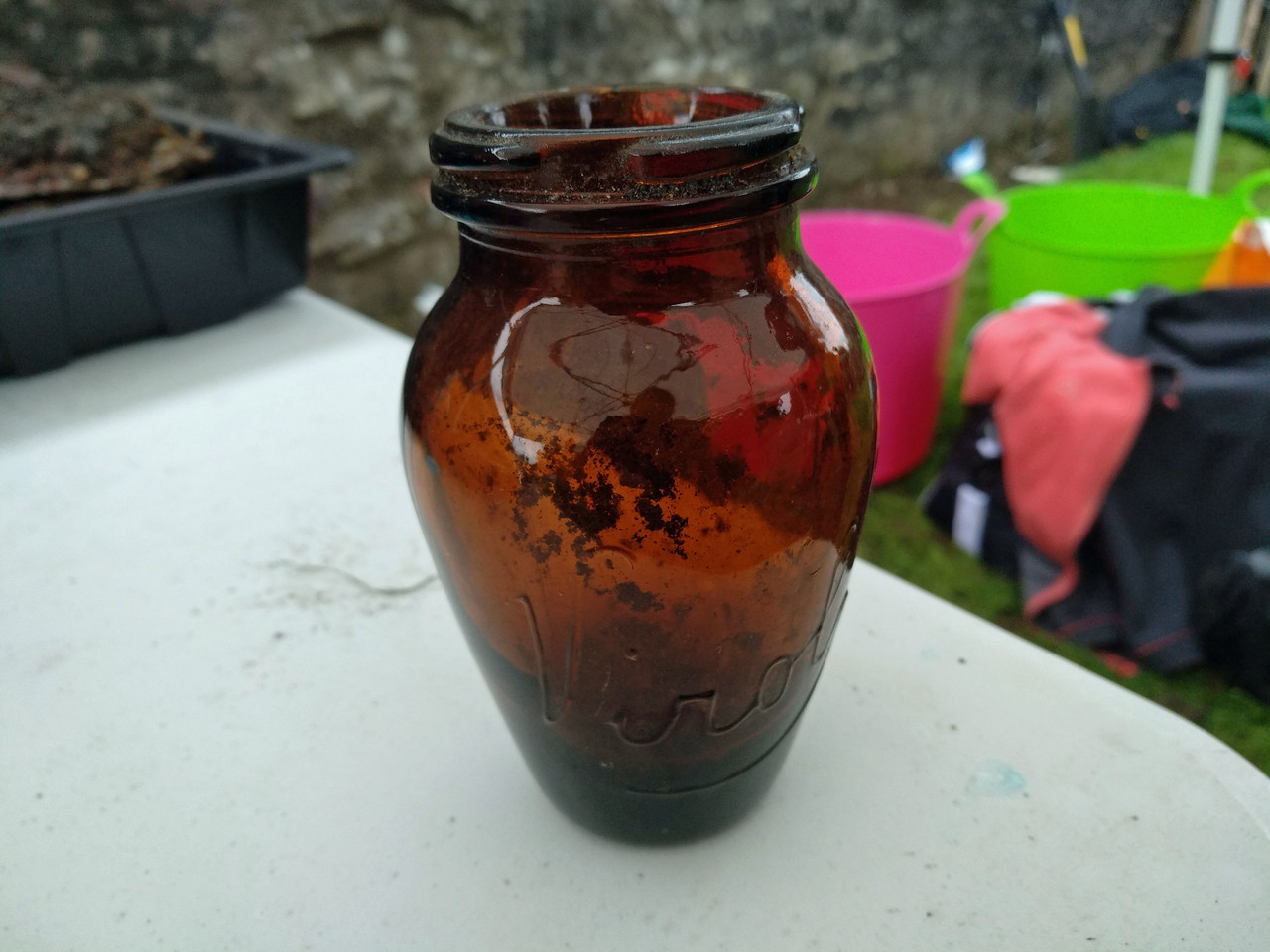

The Bovril company first produced Virol as an experimental product in their London Factory in Old Street in 1899. Along with malt extract which was a by-product of the brewing industry, the ingredients of Virol originally included red marrow extracted from cattle, refined beef fat, eggs, lemon syrup and soluble phosphates. Due to its highly nutritious content, it was marketed as a feeding supplement for infants and a health supplement for children. It was initially supplied in ceramic jars.
By the early 1920s, amber apothecary-style glass jars had replaced the original cream stoneware jars. The Virol bottle found in Milton Row can therefore be dated to the 1920s or the early 1930s, just before the houses were demolished. Virol continued to be made until World War II, when production ceased for a time as the ingredients grew too difficult and costly to acquire. After the war production resumed, with the Virol brand changing hands a number of times before ultimately being discontinued in the 1980s.
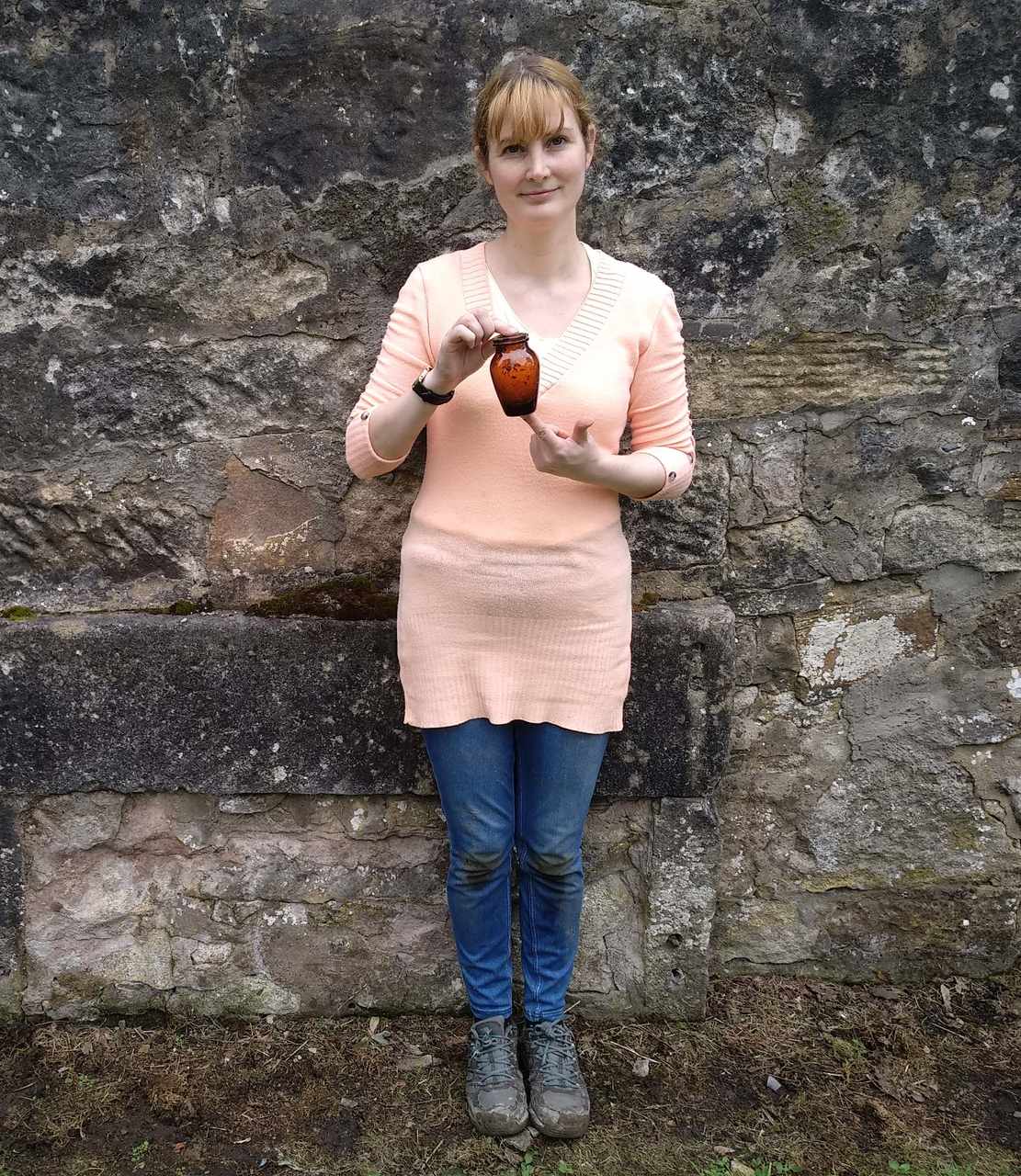

With the brand having such a long history, several of the excavators, volunteers, and a number of visitors to the Milton Row dig site recalled being given Virol as a supplement either by their parents or at school. This find therefore represents a real link not just to the past buried under a layer of ash at Milton Row, but to the childhoods and lived experiences of local residents who took part in the dig or who visited the site.
It also emphasised for me the ability of community archaeology to connect the everyday experiences of people alive today to those who lived in the past, and I’m very grateful to have had the opportunity to gain all of the excavation experience and valuable insights into our local history which the project afforded.
By Victoria Williamson, Big Dig and Dig to Display volunteer.
